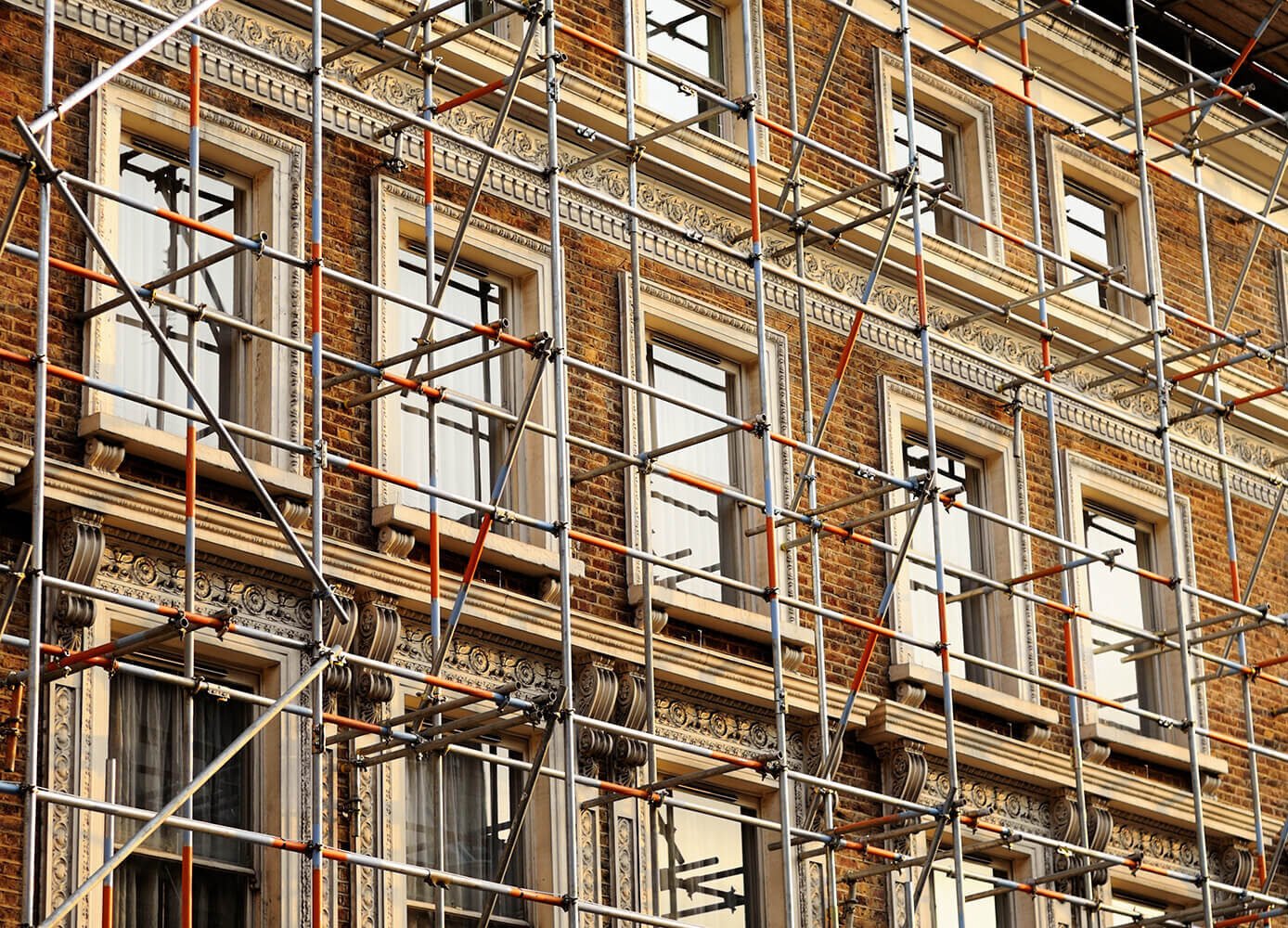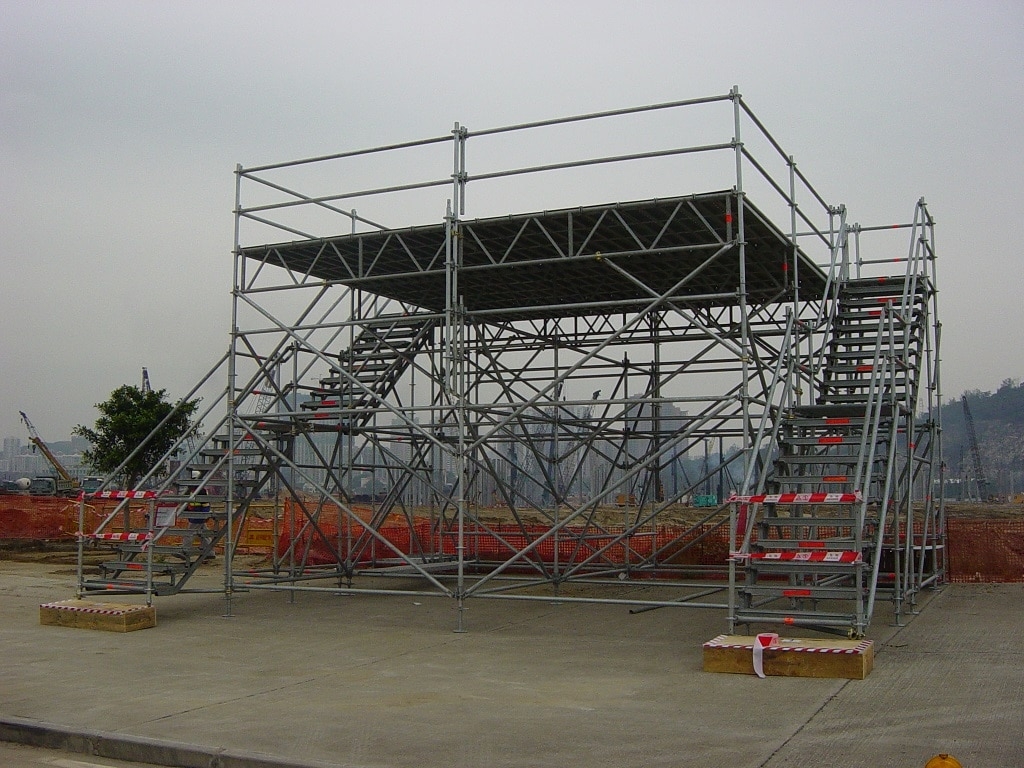Discover Leading Scaffolding Near Me for Your Home or Business Needs
Discover Leading Scaffolding Near Me for Your Home or Business Needs
Blog Article
Exploring the Numerous Sorts Of Scaffolding Used in Construction Tasks
The building and construction market counts heavily on various kinds of scaffolding to meet details job requirements, each offering distinctive advantages and applications. Typical framework scaffolding provides a durable structure for general jobs, while suspended scaffolding is essential for deal with high-rise frameworks. Various other choices, such as system and rolling scaffolding, accommodate effectiveness and mobility, respectively. Moreover, the cantilever variant confirms indispensable in city atmospheres where room is constrained. Recognizing the nuances of these scaffolding types is crucial for enhancing safety and security and performance on building websites, prompting a better exam of their one-of-a-kind qualities and applications.

Conventional Frame Scaffolding
Traditional structure scaffolding is among the most extensively used methods in the construction sector due to its effectiveness and convenience. This system consists of straight and vertical structures that are assembled to develop a stable platform for workers and products. The major parts include upright messages, straight ledgers, and angled braces, which with each other offer a strong structure that can support substantial tons.
One of the vital benefits of conventional framework scaffolding is its flexibility to numerous construction jobs, varying from household buildings to large commercial structures. The modular layout permits simple setting up and disassembly, making it reliable for both temporary and lasting tasks. Additionally, the system can be customized in height and width, accommodating different building styles and site conditions.
Safety is critical in scaffolding applications, and standard framework systems are furnished with guardrails and toe boards to stop drops and make sure employee security. Regular examinations and adherence to security guidelines are crucial in keeping the stability of the scaffold (Scaffolding). Overall, typical frame scaffolding remains a basic selection in the building market, providing a dependable system for labor and boosting general project performance

Suspended Scaffolding
Suspended scaffolding supplies a distinct remedy for construction jobs that call for access to raised surface areas, particularly in circumstances where traditional framework scaffolding might be impractical. This kind of scaffolding is commonly suspended from the roofing or top levels of a structure, using a system of wheels, ropes, and platforms to develop a functioning space that can be gotten used to different elevations.
Among the key benefits of put on hold scaffolding is its flexibility. It can be conveniently repositioned or lowered to fit adjustments in building and construction needs, making it optimal for jobs such as home window installment, façade work, and maintenance on high-rise buildings. Additionally, the minimal footprint of suspended scaffolding enables better use ground space in urban environments, where space is often limited.
Safety is a vital consideration in the use of suspended scaffolding. Proper rigging and anchoring systems should be utilized to guarantee stability and prevent accidents. Operators has to additionally be educated in the risk-free use this equipment. Overall, put on hold scaffolding gives a efficient and efficient solution for accessing hard-to-reach locations in different construction scenarios, boosting both efficiency and security on website.
System Scaffolding
System scaffolding, typically considered a contemporary option in the scaffolding industry, contains pre-engineered elements that can be promptly set up and adapted for numerous construction tasks. Scaffolding. This type of scaffolding is identified by its modular style, which permits for flexibility and performance on task websites, accommodating structural demands and various heights
Commonly made from high-strength steel or aluminum, system scaffolding uses enhanced toughness and stability. The elements consist of upright messages, horizontal journals, and diagonal braces, which interconnect firmly, ensuring a robust structure. The layout scaffold netting for sale commonly incorporates standardized installations, streamlining setting up and disassembly processes, consequently lowering labor time and costs.

Rolling Scaffolding
Moving scaffolding is a flexible alternative to typical fixed scaffolding, designed for flexibility and simplicity of use on construction websites. This type of scaffolding includes a platform sustained by frameworks with wheels, allowing employees to easily transfer it as needed. The flexibility feature significantly improves productivity, as it lessens downtime related to constructing and taking apart click dealt with scaffolding.
Normally constructed from light-weight products such as aluminum or steel, rolling scaffolding uses a sturdy yet portable remedy for projects needing constant repositioning - Scaffolding. It is particularly helpful in jobs such as painting, drywall setup, and electric job, where access to different elevations and areas is required
Security is critical in rolling scaffolding style, with attributes such as securing wheels to stop unexpected movement when in use, and guardrails to secure employees from drops. Additionally, numerous designs are flexible in elevation, accommodating various project requirements.
Cantilever Scaffolding

The style of cantilever scaffolding generally entails utilizing brackets or arms anchored to a structure or structure, making it possible for the platform to expand outside securely. Security is extremely important; therefore, these scaffolds need to be engineered to stand up to various tons and environmental check these guys out conditions. Routine examination and maintenance are necessary to make sure structural stability and employee security.
Cantilever scaffolding is preferred for its versatility and effective use space, making it a preferred choice in metropolitan settings where space restrictions prevail. Furthermore, it assists in easier access to high altitudes, inevitably adding to the general performance of construction projects. Just like all scaffolding types, appropriate training and adherence to safety and security criteria are crucial for workers using cantilever scaffolding.
Final Thought
Standard framework scaffolding provides security, while put on hold scaffolding provides versatility for raised jobs. System scaffolding helps with quick setting up, and rolling scaffolding improves movement for differing job environments.
Traditional structure scaffolding offers a sturdy structure for general jobs, while put on hold scaffolding is important for job on high-rise frameworks.Rolling scaffolding is a versatile choice to conventional set scaffolding, created for mobility and convenience of use on building and construction sites. As with all scaffolding kinds, appropriate training and adherence to safety requirements are crucial for employees utilizing cantilever scaffolding.
Typical framework scaffolding gives stability, while put on hold scaffolding offers adaptability for elevated tasks. System scaffolding promotes quick setting up, and rolling scaffolding boosts movement for differing work atmospheres.
Report this page